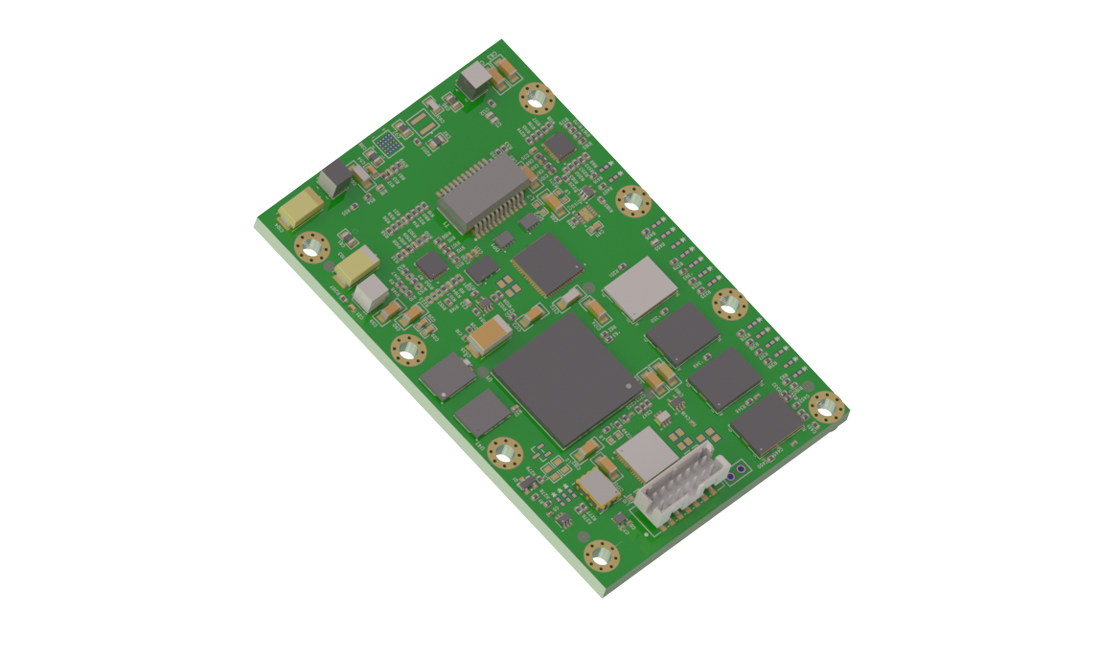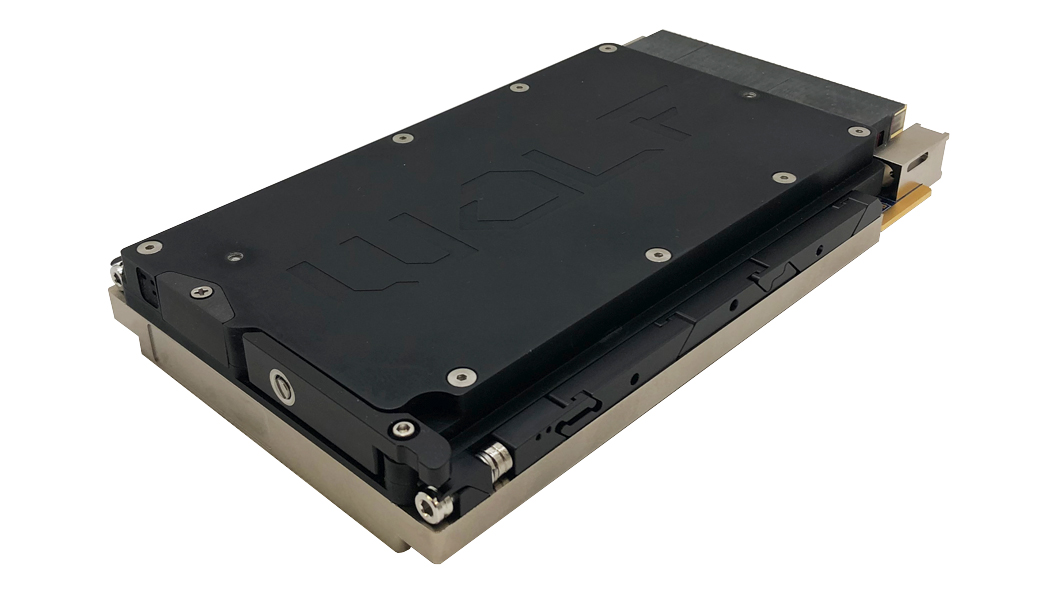Ethernet has many advantages, not the least of which are its ubiquitous nature, its ecosystem of products and services, and its relatively low cost. The reason most often cited for it not being implemented in real-time applications is its lack of determinism. It is widely regarded as a “best-effort” service – when what is often needed is a finite, predictable, and minimal time delta across transmission paths in which all data received is guaranteed error-free. It follows that a deterministic network must be able to ensure that packets properly reach their destinations – for example, mission-critical control signals.
Take, for instance, a flight control system on an aircraft requiring near-instantaneous response. Buffering data on an Ethernet network does not alleviate the issue of Ethernet’s non-deterministic nature, because buffered data is useless in a dynamic system such as an aircraft. To meet the requirements of rapid response applications, the network itself must have a real-time (deterministic) response.
While virtually all distributed systems require communication between the elements of the network, a subset of these networks requires communication to be deterministic. These distributed applications may include:
- Distributed motion control
- Real-time commands
- Industrial control and monitoring
- Hardware-in-the-loop simulation
- Synchronized data acquisition
This lack of determinism in Ethernet is an issue that has been addressed in various ways – but a new approach shows significant promise. The resultant application of what is known as “time-triggered technology” is increasing at a rapid rate in the aviation industry and increasingly finding its way into the automotive world. Military applications are especially amenable to the real-time benefits of Time-Triggered Protocol (TTP) communication, and TTP is being deployed, for example, in electronic controllers for jet fighter engines, cabin pressure control systems, and unmanned aerial vehicles.
Time-triggered technology works by applying strict rules to data transmission timing. These rules are implemented by a master node that schedules network traffic and synchronizes a network clock between all network nodes. The following discussion will examine how time-triggered Ethernet functions, how it supports heterogeneous networks, where switches fit in, and the concepts of safety and fault tolerance.
Time-triggered Ethernet: How it works
Time-triggered Ethernet expands classical Ethernet with services to meet time-critical, deterministic, or safety-relevant conditions. Alternative time-triggered networks, such as Time-Triggered Controller Area Network (TTCAN) and Time-Triggered Protocol dedicated protocol networks, are used extensively in the automotive and industrial control sectors. An advantage of time-triggered Ethernet is that it is compatible with standard IEEE 802.3 Ethernet and can be incorporated into existing Ethernet networks.
As time-triggered Ethernet supports communication among applications with various real-time and safety requirements over a network, three different message types are provided:
- Time-Triggered (TT) messages are sent over the network at predefined times and take precedence over all other message types. The occurrence, temporal delay, and precision of time-triggered messages are predefined and guaranteed.
- Rate-Constrained (RC) messages are used for applications with less-stringent determinism and real-time requirements. These messages guarantee that bandwidth is predefined for each application and that delays and temporal deviations have defined limits. If TT messages are to be transmitted via the same outgoing port at the same time, the TT messages take priority over the RC messages.
- Best-Effort (BE) messages follow a method that is well-known in classical Ethernet networks. There is no guarantee whether and when these messages can be transmitted, which delays occur, and whether messages arrive at the recipient. BE messages use the remaining network bandwidth and have less priority than the other two types of messages. BE messages always have the lowest priority. This method exploits the bandwidth of the network in an optimal way.
Time-triggered Ethernet sits on top of the layer 2 OSI model and below layer 3. Therefore, it can be seen as an extension service to existing Ethernet, providing hard real-time and synchronization capabilities to Ethernet networks. Those services use standard Ethernet frames. Time-triggered Ethernet also expands classical Ethernet use with powerful services (SAE AS6802) to meet the new requirements of reliable, real-time data delivery in advanced integrated systems. In addition, time-triggered Ethernet switches provide ARINC 664 functionality to meet existing requirements of avionics Ethernet networks.
A truly heterogeneous network
Typically, the requirement in today’s networks is to support a broad range of content types. Even in military applications, data is not the only user of the network: Provision must be made for the support of audio, video, and control systems as well as standard LAN applications. An appropriate network technology will support all of these: Multiple parallel uni-purpose networks are not an option.
Time-triggered Ethernet provides this support, facilitating the design of mixed criticality systems and system-of-systems integration.
In the aviation domain, time-triggered Ethernet can be used for high-speed active controls, smart sensor and actuator networks, deterministic avionics and vehicle backbone networks, critical audio/video delivery, reflective memory, modular controls, and integrated modular systems such as Integrated Modular Avionics (IMA) or distributed IMA. Time-triggered Ethernet also targets critical embedded systems in aerospace and defense, automotive, medical, energy production, and industrial automation.
The role of switches in time-triggered functions
As noted, TT messages are given the highest priority in the system. However, provision needs to be made to ensure that TT messages can be simultaneously transmitted to groups of end systems, or to connect unsynchronized time-triggered Ethernet networks.
Switches in time-triggered Ethernet-enabled networks have the central role of organizing the data communication. TT messages are routed in the switch according to a predefined schedule with as little delay as possible. Precise planning at the time of system design precludes resource conflicts at runtime. If the planned transmission time of one of these messages arrives, this message is immediately transmitted. Due to the predefined transmission of the message, the switch ensures that the medium is free at the time of transmission and delays are precluded.
Time-triggered Ethernet switches allow the simultaneous distribution of TT messages to groups of end systems or the connection of unsynchronized time-triggered Ethernet networks. This is how time-triggered Ethernet networks can be divided into smaller application-specific sub-networks and the design can be facilitated.
Supporting both asynchronous and synchronous (ARINC 664 and SAE AS6802) approaches to deterministic networking, time-triggered Ethernet enables parallel operation in mixed asynchronous/synchronous networks. It is designed to cover cross-industry application needs and provide deterministic network operation for a broad range of different applications.
Time-triggered Ethernet (SAE AS6802) enables design of advanced integrated systems of mixed criticality, utilizing asynchronous and synchronous communication via IEEE 802.3 Ethernet and rate-constrained and time-triggered communication services (Figure 1). This enables more efficient use of total bandwidth. In comparison, the asynchronous communication is not deterministic with more than 20 to 25 percent bandwidth utilization. With both asynchronous and synchronous traffic, the deterministic bandwidth utilization can rise to 70 to 80 percent. An overview of capabilities for asynchronous versus synchronous traffic is given in Table 1.
As shown on the left side of Figure 2, a 1 Gbps network with time-triggered Ethernet capabilities (asynchronous, time-triggered communication) is overlaid onto an Ethernet network. Time-triggered communication between network clients can occupy up to 90 percent of the network’s total bandwidth, and the remaining 10 percent of bandwidth can be occupied with housekeeping chores such as network diagnostics, configuration, and so on. The right side of Figure 2 depicts a 100 Mbps network with time-triggered Ethernet overlaid onto it. In this case, only 50 percent of the total bandwidth is used for a mix of both asynchronous communication and synchronous time-triggered communication. Forty percent of the unused bandwidth is available for future network expansion, and 10 percent is used for diagnostics.
Safety and fault tolerance
Important considerations in the design of mission-critical networks are safety and fault tolerance. Failures and irregularities need to be detected and reported, and remedial action taken. Redundancy will ideally be built into the system design to allow continued operation in the event of possible failure.
Time-triggered Ethernet is designed to achieve this, and time-triggered Ethernet networks can be set up with multiple redundant end systems, switches, and segments. Thus, the system will remain in operation even if faults occur. Redundant network paths are always used in fault-tolerant time-triggered Ethernet systems so that the failure of a single system or messages can be tolerated without affecting the application. If multiple redundancies are implemented, multiple faults can be tolerated. It is important that the entire system remains in operation without interrupts under the same temporal conditions as defined before.
Time-triggered Ethernet allows the integration of guardians in switches and end systems. Guardians check if the communication on the network works in compliance with the predefined parameters. If faulty systems block network segments, the guardian disconnects the network segment or port. Multiple redundant guardians can be implemented to meet the highest safety requirements. CS
GE Intelligent Platforms 805-965-8000 www.ge-ip.com






